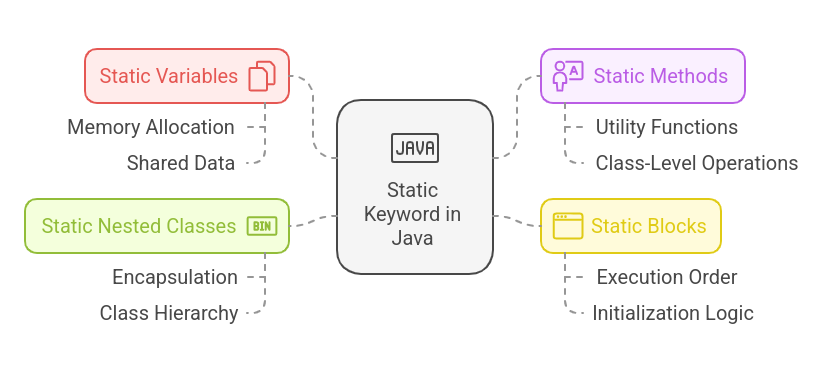In the captivating subject of computer programming, mastery of languages such as Java forms the cornerstone of any aspiring software engineer’s skill set. The beauty of Java lies in its structured simplicity, and one aspect of this language that epitomizes this concept is the for loop.
The for loop is a fundamental control flow statement used to automate and manage repetitive tasks in programming. It acts as the bedrock for various algorithms and data processing techniques. It forms the basis for many complex programs and a ladder that can take you from being a beginner in Java programming to an advanced programmer.
Let’s take the first step together in unraveling the magic of for loop in Java.
The Power of Looping
Looping is a cornerstone of virtually every modern programming language and for good reason. This technique allows a block of code to be repeated several times, saving developers countless hours of tedious, repetitive coding. But looping’s utility extends far beyond merely saving time and effort.
Consider a scenario where you need to process a list of records, perform a series of mathematical calculations over a range of numbers, or iterate through an array to find a particular element. Manually writing code to perform these tasks individually would be tiresomely long, complicated, and impractical. Here is where the concept of looping comes to the rescue.
The strength of loops lies in their ability to automate and scale processes, allowing you to write concise, manageable, and scalable code. Imagine printing numbers from 1 to 1000 without using a loop. You’d be typing print statements for quite some time, wouldn’t you? A simple for loop can accomplish this task in just a couple of lines.
However, the use of loops isn’t constrained to such simplistic tasks. Looping is essential in handling data structures, file operations, and algorithms. They’re used in everything from basic functions like printing patterns to advanced applications like handling user interactions, parsing data, managing threads, and much more.
Looping in Java
Java is a versatile and robust programming language with its design principle of ‘write once, run anywhere’. It embodies various loop constructs, making it remarkably powerful for managing and controlling repetitive tasks. These include the ‘while’ loop, the ‘do-while’ loop, and the ‘for’ loop.
The ‘while’ loop and ‘do-while’ loop are entry points into looping in Java. The ‘while’ loop continues to execute a block of code as long as the condition remains true. Meanwhile, the ‘do-while’ loop is similar, with a slight difference – it will execute the block of code at least once before checking the condition.
While both these loops have unique advantages, the ‘for’ loop is the most widely used loop construct in Java, especially when you know in advance the number of times the code block needs to be executed. Its precise structure and comprehensible syntax provide a robust framework for handling repetitive tasks. It is a workhorse that carries out iterations with remarkable efficiency.
Understanding the For Loop in Java
The ‘for’ loop is a cornerstone of Java, providing a compact and expressive way to iterate over a range of values or execute a block of code a specific number of times. Let’s break down its structure to understand why it’s an indispensable part of the Java language.
A typical ‘for’ loop in Java is structured as follows:
for(initialization; condition; iteration) {
// code to be executed
}
The for loop comprises three fundamental components, which are as follows:
- Initialization: This is where you initialize your loop control variable, which is executed only once when the loop begins.
- Condition: This is a Boolean expression that the Java Virtual Machine (JVM) checks before each loop iteration. If the condition evaluates to true, the loop continues; if it’s false, the loop terminates.
- Iteration: This is where the loop control variable is updated, often by incrementing or decrementing. The update takes place after each loop iteration.
Here’s a simple example of a for loop that prints numbers from 1 to 5:
for(int i = 1; i <= 5; i++) {
System.out.println(i);
}
In this example, ‘int i = 1’ is the initialization, ‘i <= 5‘ is the condition, and ‘i++‘ is the iteration.
Practical Application of For Loop
Once you have understood the mechanics of the for loop in Java, it’s time to bring that knowledge into real-world programming. One of the everyday use cases for the ‘for’ loop is to iterate over arrays or collections. Arrays are fundamental data structures with a fixed-size sequential collection of elements of the same type. Iterating over them to access or manipulate each element individually is a common requirement in programming tasks.
Let’s look at an example:
int[] array = {10, 20, 30, 40, 50};
for(int i = 0; i < array.length; i++) {
System.out.println(array[i]);
}
In this example, the for loop iterates over the array and prints each element. The initialization ‘int i = 0‘ starts the loop at the first index of the array. The condition ‘i < array.length‘ ensures that the loop continues until it has accessed every element. The iteration ‘i++‘ moves the loop to the next element after each iteration.
The for loop is also commonly used in mathematical computations, like calculating the factorial of a number.
Here’s how:
int factorial = 1;
int number = 5; // number to calculate factorial
for(int i = 1; i <= number; i++) {
factorial *= i;
}
System.out.println("Factorial of " + number + " is " + factorial);
In this example, we’re using a for loop to calculate the factorial of a number. It starts from 1 and multiplies factorial by each successive integer until it reaches the number.
The examples mentioned above are simple but powerful demonstrations of the practical application of the for loop in Java. They show how a for loop can help you write efficient and concise code to handle everyday programming tasks. As we move to more complex problems and data structures, the for loop will remain indispensable in your programming toolkit.
Advanced Use of For Loop in Java
While the basic for loop offers remarkable versatility, Java takes it further with the enhanced for loop or ‘for-each loop’, a feature introduced in Java 5. The enhanced for loop is used primarily to traverse collections and arrays, making it an indispensable tool in the programmer’s toolkit. It allows for even cleaner and more readable code.
The structure of an enhanced for loop looks like this:
for (Type var : array) {
// code to be executed
}
Here's an example of how it can be used to iterate over an array:
int[] array = {10, 20, 30, 40, 50};
for(int num : array) {
System.out.println(num);
}
In this code snippet, the enhanced for loop iterates over the elements in the array, assigning each element in turn to the num variable, and then executes the code within the loop (printing the number).
One of the most powerful applications of the enhanced for loop comes in Object-Oriented Programming (OOP), where you may often need to iterate over a collection of objects. For example, if you have a List of Student objects and want to print the name of each student, you could use the enhanced for loop like this:
List<Student> students = getStudents(); // Let's assume this method returns a list of Student objects
for(Student student : students) {
System.out.println(student.getName());
}
This structure is simpler and more readable than a traditional for loop, especially when working with collections.
Browse through a variety of free IT and software courses available on this platform. These courses are crafted to boost your knowledge and abilities in the ever-changing tech field, offering a great chance to gain valuable expertise and stay current with the latest advancements.
For Loop and Beyond
Mastering the for loop in Java means more than just understanding a single control flow statement. It represents a significant milestone on your programming journey, paving the way to more advanced topics and complex problem-solving skills.
As you delve into data structures such as arrays and linked lists, the for loop is a vital technique to manipulate and traverse these structures. Even when dealing with multidimensional arrays, the ‘Nested For Loop’ becomes essential, allowing the iteration through multiple layers of an array.
When it comes to algorithms, the for loop is a foundational component of many popular ones, such as sorting and searching algorithms. Whether it’s a Bubble Sort, Selection Sort, or a Binary Search, the for loop plays a pivotal role in their implementation.
In file handling and databases, the for loop proves crucial in reading and writing data, as well as executing batch processes. Even in OOPs, the for loop is instrumental in handling collections of objects.
Pro Tip: Mastering the for loop will make these topics more approachable and understandable as you progress through a software engineering course. It can be a great confidence booster, as you’ll find that it’s a concept that ties into broader programming topics. Understanding a loop is, therefore, more than just grasping a Java construct; it’s a stepping stone that propels you further on your software engineering journey, making it easier to comprehend complex topics that build on it.
Wrapping up
As we reach the end of our exploration of the for loop in Java, it’s important to note that mastering this looping construct is a critical step in becoming proficient in Java and programming as a whole. Its broad application in arrays, algorithms, and data manipulation demonstrates its central role in Java.
Whether you’re a beginner or someone with some programming experience, understanding and implementing the for loop can significantly boost your confidence in coding. It’s a powerful tool that aids in writing efficient, concise, and readable code.
In conclusion, programming is like crafting art; understanding the loop gives you one more brush to paint your canvas. So keep learning, keep experimenting, and remember that every loop you code brings you one step closer to becoming an expert Java programmer.
Discover the Advanced Certificate Program in Full Stack Software Development – your gateway to an exciting career. Whether you’re new to this or want to level up your skills, this program equips you with what you need for a successful journey in software development. Start your path to a fulfilling software development career today!









